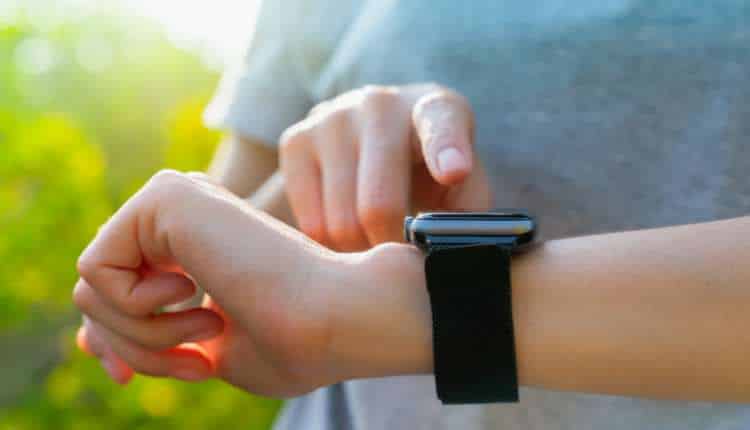
Aging is a natural part of life, and so is the need to adapt to the changing needs of our loved ones. For seniors, maintaining independence while ensuring safety is a top priority. Wearable GPS devices have emerged as a practical solution, providing both peace of mind and a touch of modern convenience.
These devices are more than just a technological trend; they are lifelines that offer safety without compromising style or comfort. Whether your goal is to stay connected with an elderly family member or enhance their sense of security, wearable GPS trackers are reshaping how we care for seniors.
For those in Canada, Life Alert systems in Canada complement wearable GPS devices by offering a range of emergency response solutions. Together, these technologies form a robust safety net for seniors, empowering them to live independently while staying connected to their families.
Why Wearable GPS Devices Are a Game-Changer
Explore our online courses and eBooks on meditation, positive thinking, overcoming procrastination, motivation, affirmations, discipline, focus, and many more topics.
Wearable GPS devices address a crucial concern for families of seniors: ensuring safety without diminishing autonomy. These devices are compact, easy to use, and blend seamlessly into daily life.
Unlike traditional monitoring systems, wearable GPS trackers are unobtrusive and versatile. They can be worn as bracelets, pendants, or even integrated into smartwatches, ensuring seniors feel comfortable while staying safe.
Key Benefits of Wearable GPS Devices
1. Real-Time Location Tracking
Wearable GPS devices allow caregivers to monitor a senior’s whereabouts in real time. This feature is especially useful for individuals with memory-related conditions, such as dementia or Alzheimer’s, who may wander and become disoriented.
2. Emergency Response Features
Most wearable GPS devices include a panic button, enabling the wearer to alert caregivers or emergency services with a single press. In critical situations, this quick access can save lives.
3. Geofencing for Added Security
Geofencing allows caregivers to set virtual boundaries. If the senior moves beyond the designated area, the device sends an alert. This feature is ideal for preventing wandering and ensuring that seniors stay within safe zones.
4. Health Monitoring Capabilities
Some advanced wearable GPS devices also monitor vital signs, such as heart rate, blood pressure, and activity levels. This added functionality helps caregivers keep an eye on overall health.
Features to Look for in a Wearable GPS Device
Not all GPS devices are created equal. Choosing the right one depends on your specific needs and the senior’s preferences. Here are some features to consider:
1. Ease of Use
Seniors often prefer devices that are simple and straightforward. Look for models with intuitive controls, clear displays, and minimal setup requirements.
2. Battery Life
A long battery life is crucial to ensure the device remains functional throughout the day. Many devices offer standby times of several days, reducing the need for frequent charging.
3. Comfort and Design
Since these devices are worn regularly, comfort is essential. Lightweight, ergonomic designs that can be adjusted to fit comfortably are ideal. Stylish options, such as those resembling jewelry or standard watches, ensure seniors feel confident wearing them.
4. Water Resistance
Accidents can happen, and water resistance adds an extra layer of durability. Whether during a shower or a sudden rainstorm, a water-resistant device ensures continuous functionality.
5. Two-Way Communication
Some wearable GPS devices include built-in microphones and speakers, enabling two-way communication. This feature allows seniors to speak directly with caregivers or emergency responders in case of need.
Enhancing Independence While Ensuring Safety
Maintaining independence is a cornerstone of a senior’s well-being. Wearable GPS devices strike the perfect balance between safety and autonomy. With these devices, seniors can confidently engage in activities like walking in the park, shopping, or visiting friends, knowing they’re only a button press away from assistance.
Reducing Caregiver Stress
For family members and caregivers, these devices alleviate stress by providing constant, unobtrusive monitoring. Geofencing and real-time tracking eliminate the need for frequent check-ins, allowing caregivers to focus on other responsibilities while staying informed.
Overcoming Barriers to Adoption
Despite their numerous benefits, some seniors may initially resist adopting wearable GPS devices. It’s essential to approach the topic with empathy and understanding.
Addressing Privacy Concerns
Seniors may worry about being overly monitored. Emphasize that GPS devices are designed for their safety, not to invade their privacy. Reassure them that location tracking is only used when necessary.
Highlighting the Convenience Factor
Focus on how wearable GPS devices simplify their lives. From one-touch emergency buttons to health tracking, these devices offer features that enhance convenience without being intrusive.
Offering Stylish Options
Many seniors are more likely to wear a device that looks like an everyday accessory. Present them with options that match their style, such as sleek wristbands or elegant pendants.
Choosing the Right Wearable GPS Device for Your Loved One
Selecting the best wearable GPS device involves considering the individual needs of the senior, their lifestyle, and the features that matter most. Here’s a breakdown of key factors to guide your decision-making process:
1. Purpose and Primary Use
Identify the main reason for the device. Is it for tracking location, ensuring quick emergency responses, or monitoring health? Understanding the primary purpose will narrow down your options and help you find the most suitable device.
2. Activity Level
Consider the senior’s activity level. Active seniors may prefer lightweight, sporty designs with advanced features like step counters or fitness tracking. For those who stay mostly indoors, a simpler model with basic GPS and SOS functions might suffice.
3. Connectivity and Compatibility
Many GPS devices require a mobile app for caregivers to access tracking information. Ensure the device is compatible with your smartphone and offers user-friendly software. Some models also provide web-based platforms for monitoring.
4. Subscription Plans
Most wearable GPS devices require a monthly subscription for their tracking and communication features. Compare plans based on cost, coverage area, and included services. Choose a plan that fits your budget and meets your needs without unnecessary extras.
5. Durability and Build Quality
Durability is vital, especially if the senior frequently engages in outdoor activities. Look for devices that can withstand minor bumps, scratches, and occasional exposure to water. Rugged models are ideal for those who live in colder climates or lead an active lifestyle.
6. Customer Support and Warranty
Reliable customer support and a good warranty can make a significant difference if the device malfunctions. Check reviews for customer service responsiveness and ensure the product comes with a warranty for added peace of mind.
By taking the time to evaluate these factors, you can find a wearable GPS device that offers the perfect combination of comfort, functionality, and peace of mind for your loved one.
Conclusion
Wearable GPS devices have revolutionized senior care, offering unparalleled safety and convenience. By blending functionality with comfort and style, these devices provide peace of mind for both seniors and their caregivers.
Whether it’s through real-time tracking, emergency alerts, or health monitoring, wearable GPS devices ensure that aging adults can maintain their independence while staying safe.
For families exploring options, combining wearable GPS devices by companies like Life Alert systems in Canada creates a comprehensive safety solution tailored to seniors’ unique needs. As technology continues to advance, the possibilities for enhancing senior care are limitless.

